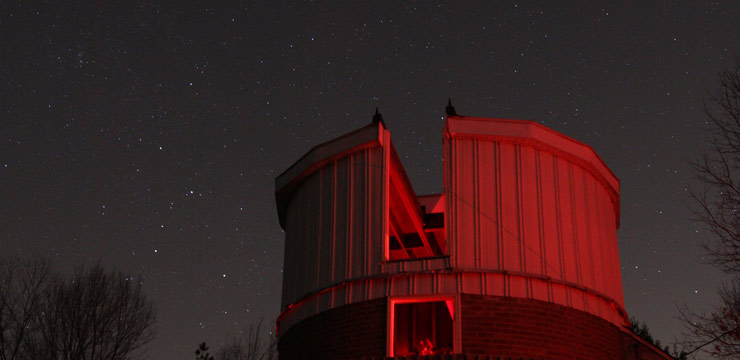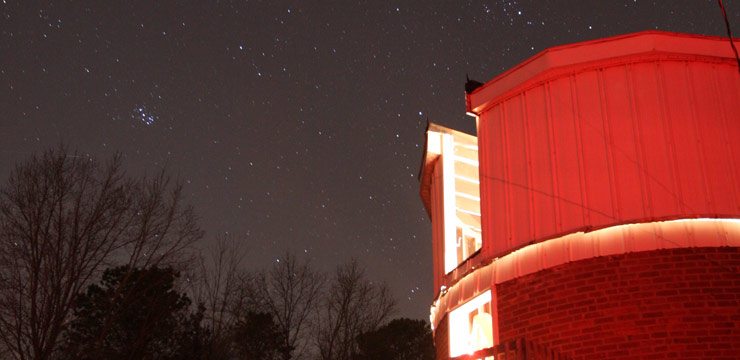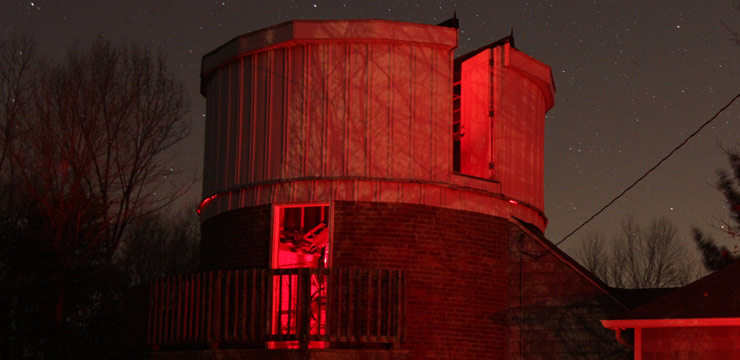
Public Observing Night
by
A clear and cold Saturday night at last quarter Moon coincided with the World Wildlife Fund's annual "Earth Hour" observance, which encourages citizens to turn out non-essential lights for an hour to promote energy conservation, but also has the added benefit of promoting light pollution awareness for astronomers and sky-watchers.
Bob Horton and I opened the Clark, and Jim Brenek and Tom Thibault opened the 12-inch Meade. It would be a relatively quiet evening compared to last week, when dozens of people showed up to see the "super" Moon from Seagrave. This week we entertained about 10 guests.
As the sky darkened, Orion was sitting over the southwest, his belt parallel to the horizon, ans Sirius demonstrated a moderate amount of high-frequency scintillation. The seeing would moderately good, improving slightly later in the evening, despite the Clear Sky Chart predictions for bad (1/5) conditions. The entirety of Ursa Major was visible from the balcony and Cassiopeia was placed just to the west of the dome as seein from the courtyard. I took advantage of the favorable seeing conditions to take some wide-angle photos of the sky and observatory.
After visiting last week, Jeffrey, who is planning joining returned this week and I showed him how to use his star wheel to orient himself with the sky by finding Orion, the Big Dipper, and the Pleiades.
All but one of our guests left, so we all gathered in the Clark dome to observe Saturn. The seeing was still not ideal, but Tom reported seeing one of the bands on Saturn's globe.





